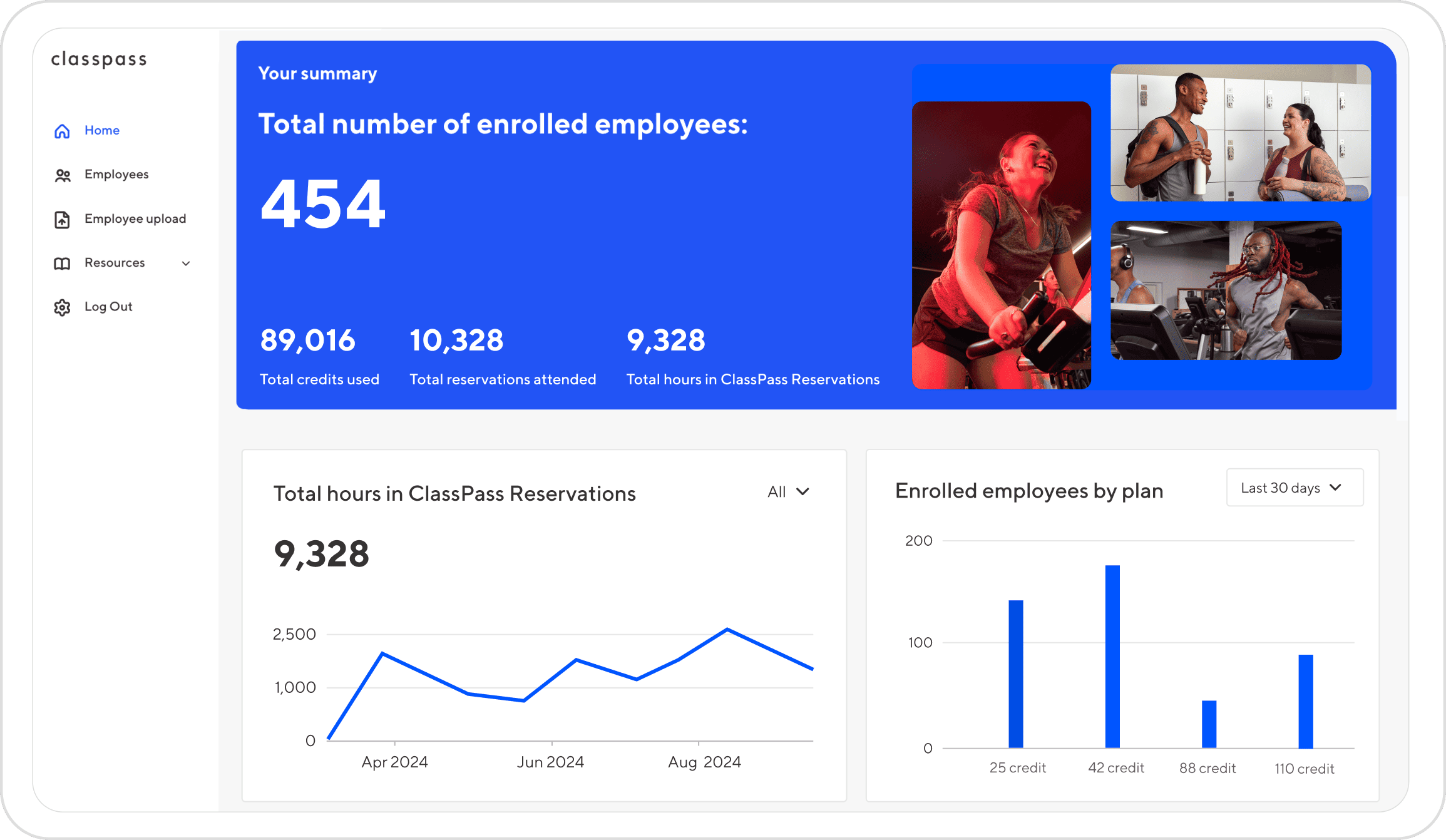Employee engagement
Monitoring the level of employee engagement with your wellness program is a straightforward yet powerful way to assess its true impact. While it's essential to know who has signed up, it's equally important to understand which employees are actively participating and how they are engaging with the program. High participation rates suggest that employees find value in the corporate wellness program. However, deeper insights into which teams or divisions are involved—and how often benefits are being accessed—can help you fine-tune the program and your approach.
For example, if your company has offices or employees nationwide and there's low participation in a specific state, it can indicate limited options for the corporate wellness program. Many programs you incorporate should provide an interface for admins to see this information in easy-to-see data points and reports that can be pulled as needed, allowing you to track both signups and ongoing engagement, ensuring the program delivers lasting results.
Healthcare utilization and costs
One of the primary goals of a corporate wellness program is to reduce healthcare costs by preventing chronic diseases and promoting healthier lifestyles. Monitoring changes in healthcare utilization and costs before and after implementing the program can provide tangible proof of its impact. Analyze data on the number of doctor visits, hospitalizations, and prescription drug use. A decrease in these metrics can indicate that your wellness program is positively influencing employees' health and leading to cost savings.
Feedback
In whatever way you choose to do it, whether manually or through a digital solution, polling feedback through surveys and in-person follow-ups will provide a detailed temperature reading of how employees feel about the program(s), what they enjoy the most, what they wish was offered, and more. These insights will help identify areas of improvement and make informed decisions about program adjustments. Positive feedback will reinforce the importance of the program and motivate continued participation.
Productivity, retention, and absenteeism
While not directly tied to wellness, tracking metrics like employee productivity, retention, performance, and absenteeism can provide valuable insights into the broader impact of your wellness program. These key indicators often serve as indirect measures of the program's success. Variables such as sick days taken, job performance metrics, employee engagement, and retention rates can reveal trends that align with wellness participation.
HR reporting is instrumental in helping gather and analyze these metrics, allowing you to spot correlations between program engagement and improvements in productivity, reduced absenteeism, enhanced performance, and higher retention rates. By leveraging these insights, you can better understand the long-term benefits of your corporate wellness initiatives and make informed decisions about future program updates and offerings.
Support and monitor employee wellness with the ClassPass Corporate Wellness Program
A corporate wellness program is an investment in your employees' health and the health of your organization. The ClassPass Corporate Wellness Program offers employee wellness benefits designed for your business and budget, allowing employees to tend to their physical and mental health through access to fitness studios, gyms, salons, and spas.
The program’s user-friendly dashboard lets you easily track key metrics such as employee signups, participation rates, and benefit utilization, improving program tracking and analytics for your HR department.

A successful wellness program is a dynamic one, so be open to adjusting based on the data you gather to continually improve employee wellbeing and engagement.











